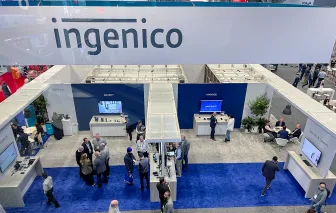With open technology, Android helps developers keep up with the rapid change in the payments space
While many advancements in the payments space are consumer-driven, software developers can take credit for a tech trend gaining momentum: Android terminals.
Traditionally, developing software for a vendor’s payment terminal required working with a proprietary development platform and operating system. So, development not only took a significant investment of time and resources, but payment technology companies and acquirers also needed to find developers with expertise in that platform. While there is a limited number of developers who are experts in the various proprietary payment terminal platforms Android developers are much easier to find.
What Developers Can Do with Android
Once a payment technology company or acquirer assembles a world-class Android development team, the sky’s the limit. Android is an open platform, enabling integration with a broad range of solutions. This gives integrators, processors, acquirers in the payment space the opportunity to add functionality, like integration with accounts payable and invoicing. The door is also open to differentiating their offerings with solutions that meet the needs of certain verticals. For example, providing a terminal for nonprofits that can easily accept small donations via contactless payment or mobile wallet, or a pay-at-the-table solution for restaurants.
Furthermore, Android helps developers take those solutions to market more quickly. The Android OS includes resources that make developers’ lives easier, including communications and process flow. Access to these resources gives developers an easier path to completing projects. Overall, Android allows developers to create new features for payment solutions and do it in less time.
What Transactions Look Like at an Android Terminal
Although Android undoubtedly offers developers advantages, merchants and consumers also enjoy the benefits. For example, using Ingenico’s Axium DX8000 terminal, which runs on the Android OS, colours and font sizes can be programmed easily to assist consumers with vision impairments. The audio port on the DX8000 can be leveraged to help consumers with a visual impairment listen to terminal prompts on the terminal, if the prompts are difficult to see.
The large-screen on the DX8000 also creates an opportunity for merchants to engage customers at the point of sale with graphical images and messaging or even with ads to create a new revenue stream. These types of features can enhance experiences for consumers and also help small business owners compete more effectively with larger businesses that have invested in developing these capabilities at the point of sale.
The Outlook for Android Terminals
Over the last decade, the payment ecosystem has evolved rapidly, and it appears that change will continue to occur faster and faster. Developers of payment terminal solutions will find it difficult to keep up if they must continue to work with proprietary payment terminal platforms. Working with an Android payment terminal platform enables speed and flexibility that produces product features that drive consumer and merchant demand. Product development is easier and results in faster quality assurance testing when using Android terminals.
It's a win for integrators, processors and acquirers committed to innovation, but ultimately, merchants and consumers will benefit from feature-rich, user-friendly experiences at the point of sale.










